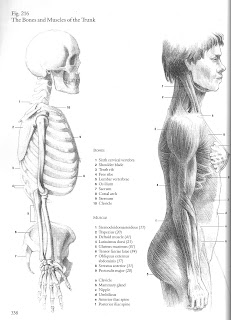The eye is an important yet complex element within a portrait. A great deal of emphasis is placed in the eyes as they relate to likeness and psychology. Understanding its form is the beginning of depicting it properly. In words, think of its structure, a ball settle into a bone socket. The brow bone or ridge overhangs the ball slightly. This ball is then draped, above and below, with two lids that have thickness. To the center of the face and slightly below middle we find the tear duct. These lids do not make an opening like a symmetrical football, but rather peak closer to center on the upper lid, and slightly toward the outside in the bottom lid. In the eye ball we the sclera (whites of the eye) the iris (the eye color), pupil (dark spot the resides in the iris), and the cornea (the lens on the surface). While drawing the eye it is important to remember these structures as light falls across all differently.

In the mouth we find a structure that wraps around the cylinder of the teeth and head. It is composed of three masses in the upper lip, a center flanked by two wings. The lower lip is composed of two masses parted slightly in the middle. The upper lip tappers quickly at the corners and curls down. The upper lip is usually in shadow since its top protrudes and then rolls under as it meets the opening. The lower lip receives light, along the two masses, and sharply descends to shadow along the middle underside, yet descends to shadow slowly along the edges as the lip rejoins the facial mass.


The nose is often one of the hardest features to capture. Again think of its structure as an aid in depicting it properly. There are three basic masses to consider- the ball, nostrils and bridge. It has four basic planes- one top, two sides, one bottom.











































